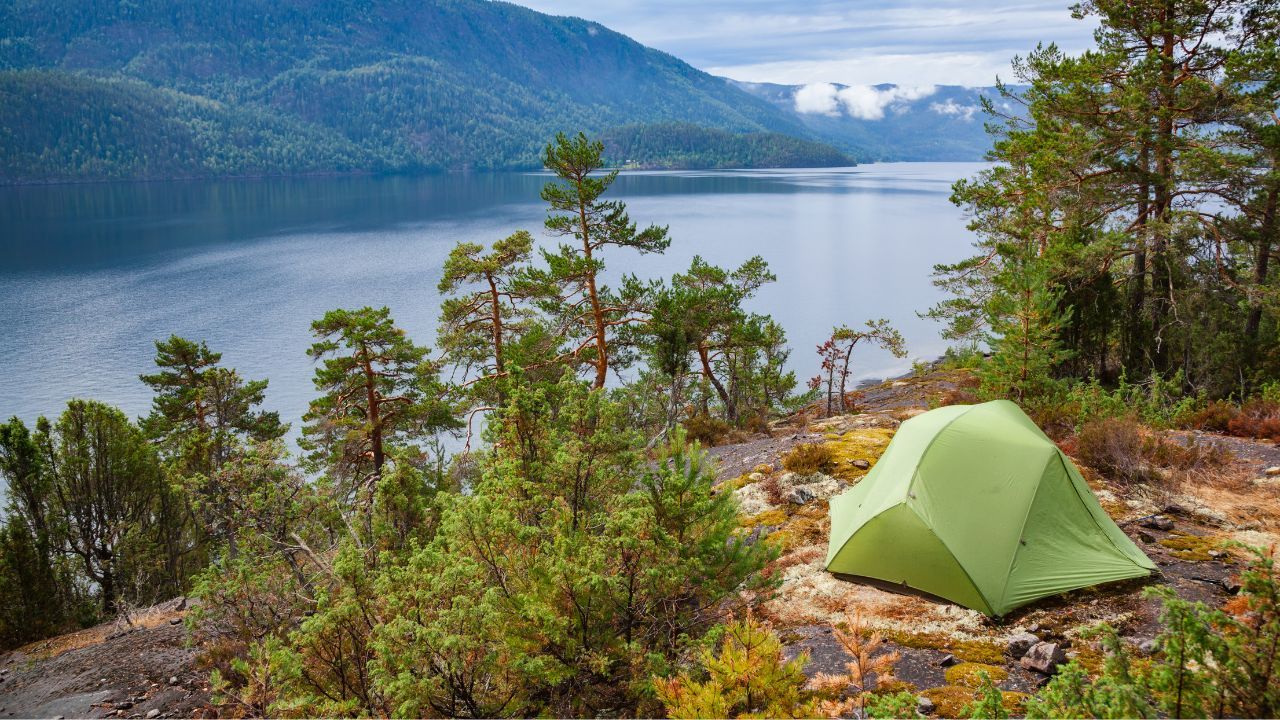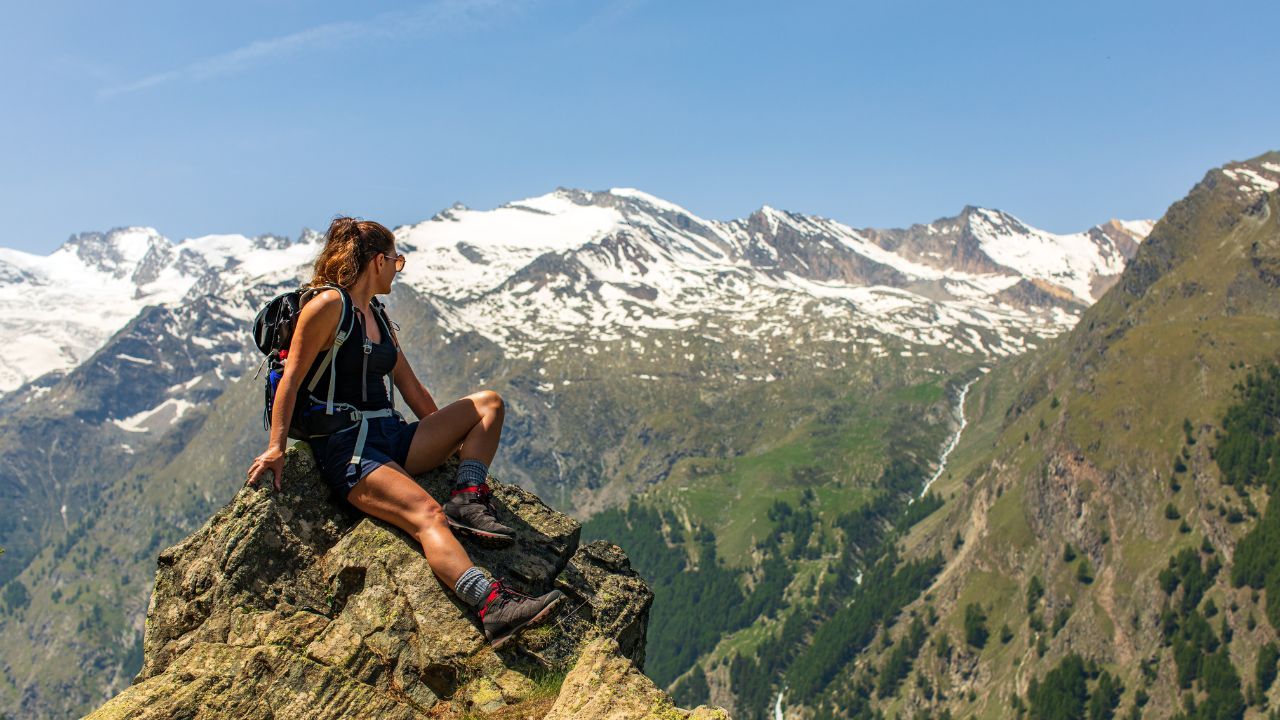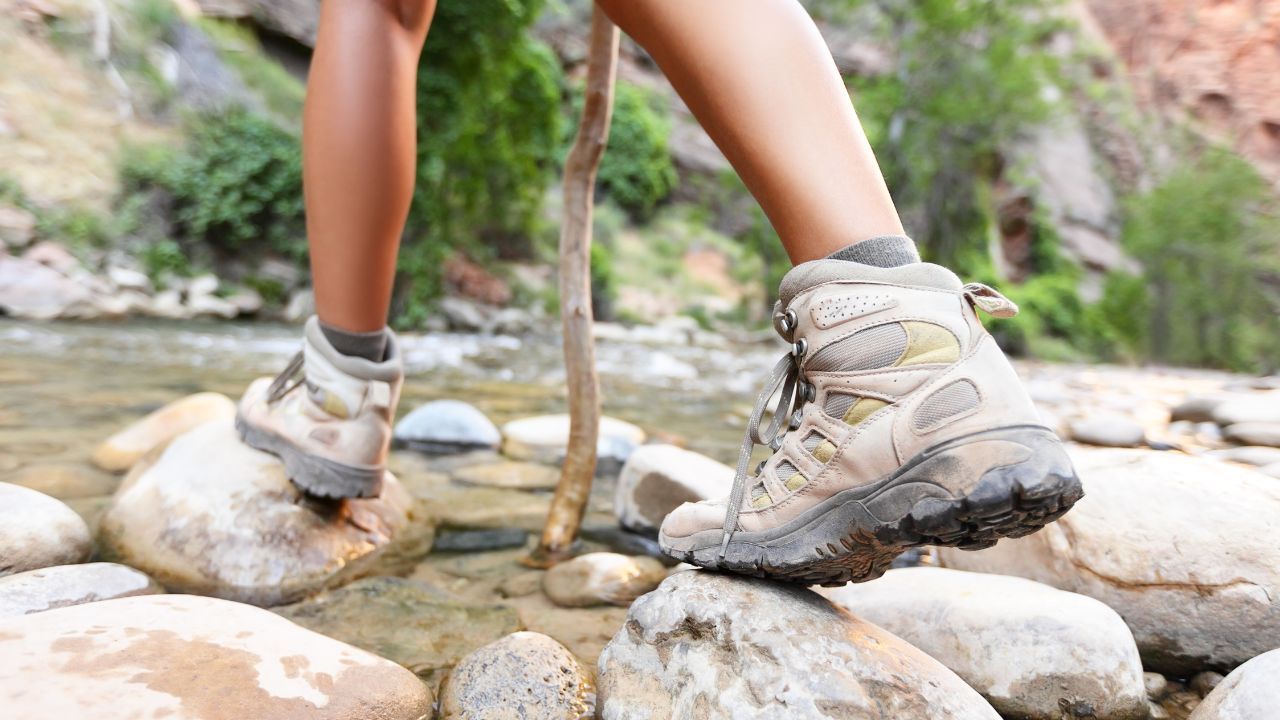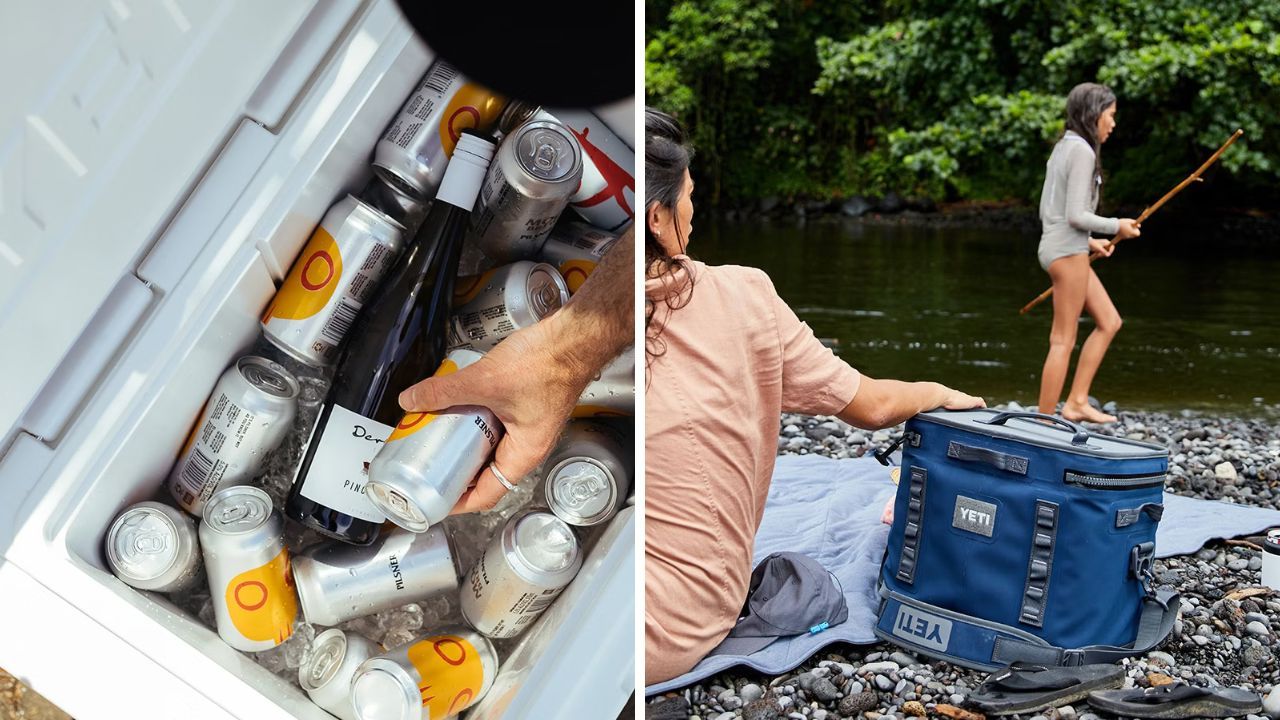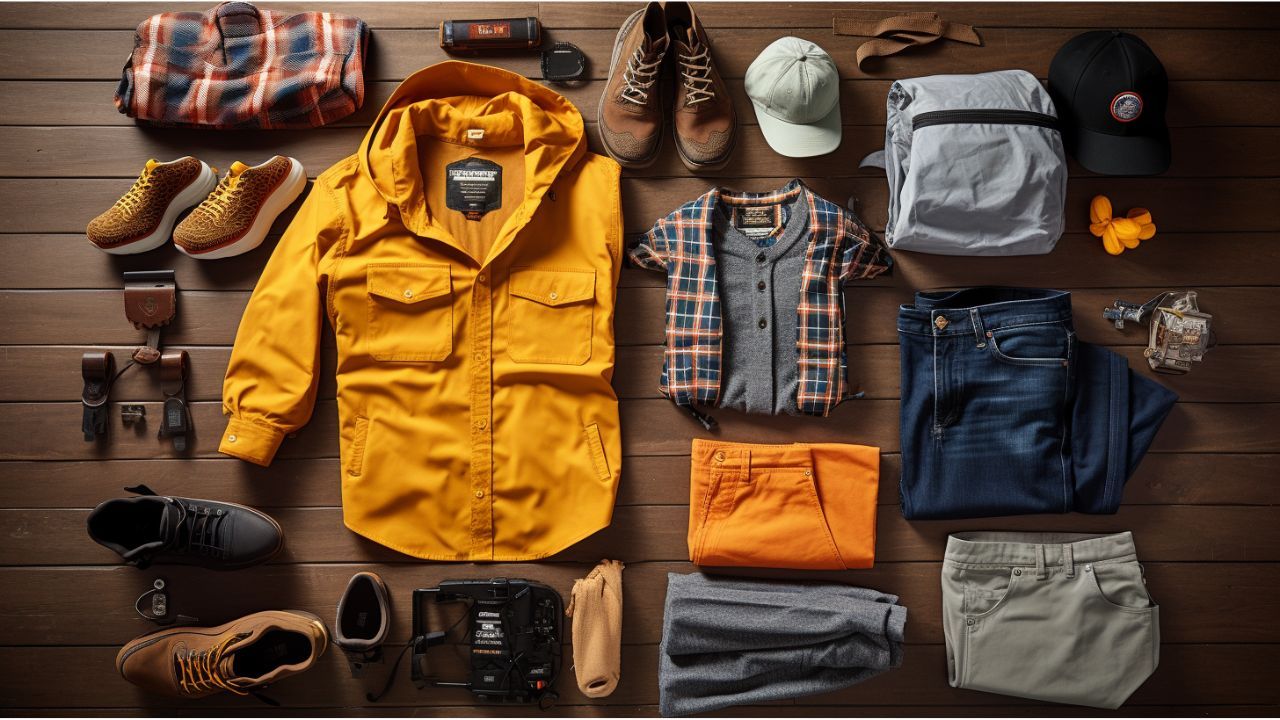
What To Wear Camping: From City Slicker to Wilderness Pro
Not sure what to wear camping? Our detailed guide has you covered for all seasons. Get ready to embrace the outdoors in style!
Embarking on a camping adventure is always exhilarating, but before you get lost in the beauty of the great outdoors, you need to ensure you’re properly clad to face Mother Nature’s whims.
The right clothing and gear are your first line of defense against the elements, be it the sun's scorching rays, relentless rain, or the bitter cold.
With diverse weather conditions and types of camping — like the laid-back car camping, the chilly winter camping, or the sunny retreats of summer camping — your attire plays a pivotal role in your comfort and safety.
Key Takeaways
- Dressing appropriately for camping is crucial to ensure comfort and safety against diverse weather conditions.
- Layering is a fundamental principle: a moisture-wicking base layer, a lightweight insulating middle layer, and a waterproof breathable outer layer form the core of camping attire.
- Choosing the right material for your clothing is equally important; moisture-wicking fabrics keep you dry, while insulating fabrics help maintain body heat in cooler weather.
Quick Checklist
| Item | Description | Benefits |
|---|---|---|
| Hat (Preferably Synthetic) | Important for sun protection and quick drying. | Protective, Quick drying |
| Sunglasses | Important for sun and wind protection. | Eye protection |
| Beanie | For keeping warm during cold nights. | Warm |
| Bandanna or Neck Gaiter/Buff | Essential for tying up long hair, soak it with water to keep cool, or use it as sun protection. | Convenient |
| For Women: Sports Bra | One is enough as it can be washed and dried overnight. | Minimalist, Quick drying | Merino Wool Underwear | Best underwear for moisture-wicking and odor control. | Moisture-wicking, Comfortable |
| Long Underwear (Top & Bottoms) | Worn to bed while other clothes dry; essential for unexpectedly cold nights. | Warm, Comfortable |
| Synthetic T-shirt or Tank Top | Dependent on the weather; can replace or complement the button-down shirt. | Weather adaptable |
| Synthetic Button Down Shirt or Flannel | Long-sleeved for bug and sun protection, with a collar to secure a bug net. Versatile in varying temperatures. | Bug/sun protection, Versatile |
| Fleece/Down Jacket | For warmth, fleece is a more affordable alternative to down puffy jackets, but nothing beats the warmth of down. | Warm mid layer |
| Hardshell Rain Jacket | Great for wind and water protection; paired with fleece for winter weather. | Wind/Water protection, Versatile |
| Gloves (if cold) | For keeping hands warm in cold weather. | Warmth |
| Nylon Pants (Zip-off into shorts) | Chosen over jeans to avoid the moisture retention of cotton. | Quick drying, Versatile |
| Merino Wool Socks | Best socks for moisture-wicking, though they may take longer to dry. | Moisture-wicking, Comfortable |
| Trail Runners/Hiking Boots | Trail Runners for quicker drying time and comfort. Hiking boots are great for colder weather and rough terrain. | Fast drying, Lightweight |
Understanding the Basics of Camping Attire
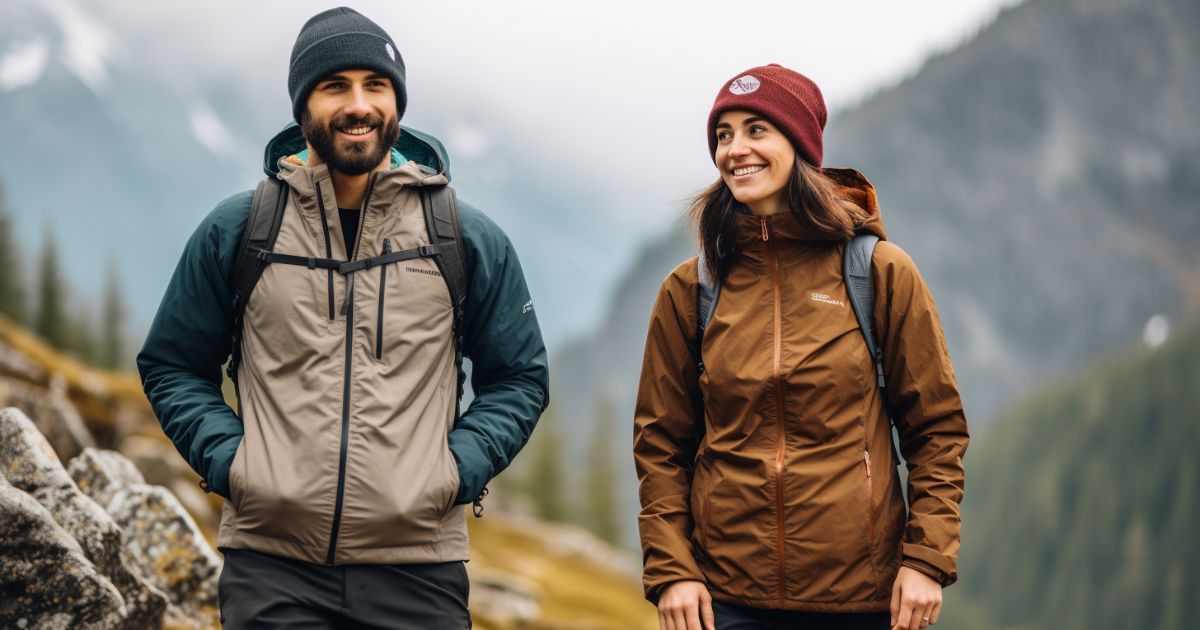
The Principle of Layering
Layering is your best friend when it comes to camping attire. It's all about managing moisture, insulating well, and shielding against wind and rain. Let's break it down:
1. Base Layer (Moisture-Wicking Base Layers)
The base layer is your personal climate control system. It sits right next to your skin, working tirelessly to wick away sweat and keep you dry. Think of materials like merino wool or synthetic fabrics which are excellent at moisture management.
For example, a moisture-wicking long-sleeve shirt could be a game changer during your camping excursions, keeping you fresh during a summer hike or acting as a cozy first layer in chillier conditions.
2. Middle Layer (Lightweight Middle Layer)
This is your insulation haven. The middle layer traps body heat to keep you warm when the temperatures dip.
Fleece jackets, flannels, or down vests are classic examples, providing that cozy insulation without weighing you down. Imagine being wrapped up in a snug fleece jacket as you sit around the campfire, sharing tales under the starlit sky.
3. Outer Layer (Waterproof and Breathable Jacket)
The outer shell is your knight in shining armor against the ruthless wind and rain. A waterproof yet breathable jacket is crucial to shield you from the elements while allowing sweat vapor to escape, keeping you comfortable.
Brands like Gore-Tex are renowned for offering top-notch waterproof and breathable jackets that can withstand the harshest weather conditions.
| Layer | Purpose | Example Items |
|---|---|---|
| Base Layer | Moisture Wicking | Synthetic T-shirt, Leggings |
| Middle Layer | Insulation | Fleece Jacket, Down Vest |
| Outer Layer | Weather Protection | Waterproof Jacket, Rain Pants |
The Importance of Material Choice
The fabric of your camping clothes can significantly affect your comfort and safety outdoors. Let's delve into the science of fabric:
1. Moisture-Wicking Fabrics
Moisture-wicking materials, like polyester or merino wool, are engineered to move sweat away from your skin to the outer surface of the fabric, where it evaporates quickly. This is essential to prevent chills and maintain a comfortable body temperature.
2. Insulating Fabrics for Cold Weather Camping
When the mercury plunges, insulation is key to maintaining body heat. Fabrics like fleece or down provide excellent insulation and are lightweight, making them perfect for camping. They work by trapping warm air close to your skin, creating a thermal barrier against the cold.
By understanding the basics of camping attire, from the principle of layering to the importance of material choice, you're already on the right path to gear up appropriately for your next camping adventure.
Whether you're a seasoned camper or a newbie, knowing what to wear camping is the first step to enjoying what nature has in store.
| Material | Breathability | Moisture-Wicking | Insulation | Durability |
|---|---|---|---|---|
| Wool | High | High | High | Moderate |
| Cotton | Low | Low | Low | High |
| Synthetic | Moderate | High | Moderate | High |
Footwear Fundamentals

Treading on the rugged trails or navigating through dense woods, your feet are in for a real workout.
The right footwear not only provides the necessary support and protection but also ensures you can enjoy your outdoor escapades without any painful interruptions.
Hiking Boots (Pair of Hiking Boots)
A sturdy pair of hiking boots is like having a solid foundation. They provide the necessary support to your ankles and feet while ensuring a good grip on varied terrains.
Opt for boots with good cushioning and support to absorb shocks as you tread along rocky trails.
The magic lies in a snug fit, which prevents blisters and keeps your feet comfortable throughout the day.
So when you lace up those boots, you're not just stepping into comfort, you're stepping into a day of adventure with confidence.
Waterproof Hiking Boots
The wilderness is unpredictable, and a sudden downpour or a stroll near a stream shouldn't leave you with soggy feet.
Waterproof hiking boots are your go-to companion for keeping your feet dry and comfortable. They come with a waterproof membrane that stops water from seeping in while allowing your feet to breathe.
It’s like having an umbrella for your feet, come rain or shine!
Other Footwear Options
Besides hiking boots, there are other footwear options to consider based on the nature of your camping trip and activities.
- Trail running shoes are great for a lighter, faster pace and provide a good grip on varied terrains.
- Sandals or water shoes are perfect for those camping near water bodies, letting you enjoy a splash without the squish.
- Camp shoes: And let's not forget a comfy pair of camp shoes to relax in after a day of exploring. Many people swear by Crocs, but I usually just wear a pair of slip-on Vans.
| Footwear Type | Protection | Comfort | Suitable Terrain |
|---|---|---|---|
| Hiking Boots | High | High | Rough, Rocky |
| Trail Running Shoes | Moderate | High | Mixed, Moderate |
| Sandals | Low | Moderate | Flat, Easy |
| Water Shoes | Moderate | Moderate | Water, Wet |
Slumber Comfort: What to Wear to Bed
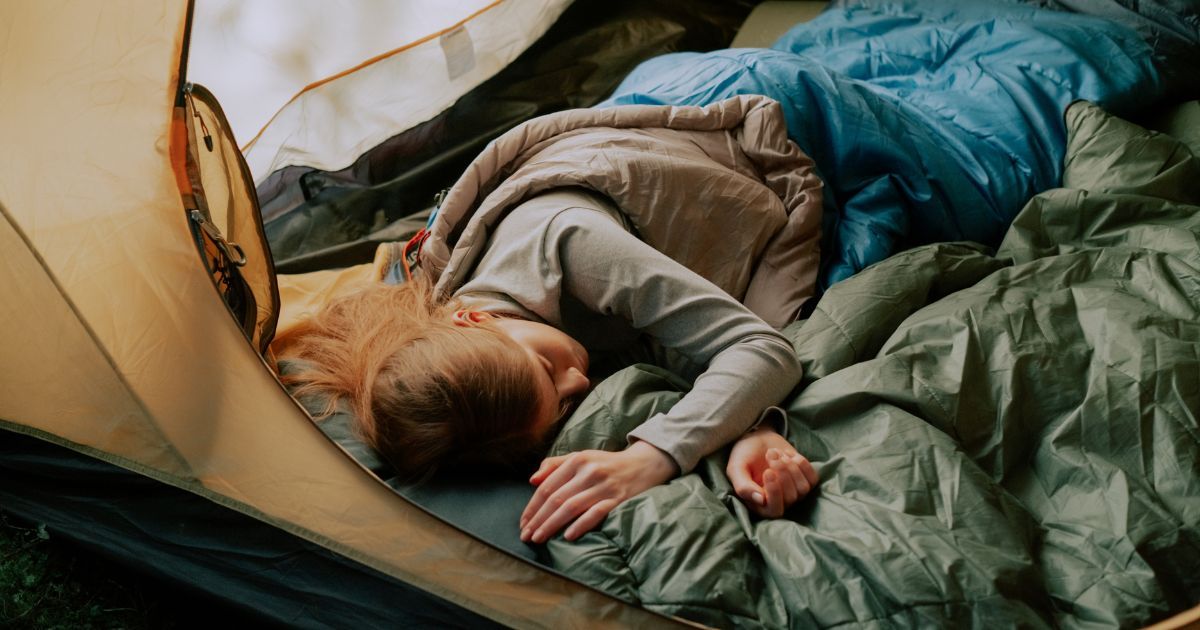
After a day full of adventures and exploring the great outdoors, a good night’s sleep is paramount to recharge for the next day.
What you wear to bed while camping plays a significant role in ensuring a restful slumber.
Here's how to choose your sleep attire to ensure you wake up refreshed and ready for another day of outdoor escapades:
- Material Matters: Again, opt for materials that are soft, breathable, and moisture-wicking. Fabrics like merino wool or lightweight synthetic materials can keep you dry and comfortable through the night. They wick moisture away from your skin, preventing any clammy feeling and promoting a more restful sleep.
- Warmth Without Weight: Especially in colder camping conditions, retaining your body heat is crucial. Thermal leggings and long-sleeve thermal tops are my go-to choice. They provide the needed warmth without adding bulk, making your sleep more comfortable. Remember, it's all about keeping warm but not overheated.
- Avoiding Tight Clothing: It might be tempting to bundle up in tight clothing to keep warm, but it's actually better to wear loose-fitting clothes. Loose clothing allows your body to regulate its temperature more effectively and promotes better circulation.
- Extra Layers: Having an extra fleece jacket or a beanie can be a lifesaver if temperatures drop during the night. They provide additional warmth and can easily be taken off if you get too warm.
- Sock It Up: A good pair of warm, moisture-wicking socks can make a huge difference in keeping you warm. Cold feet can seriously disrupt your sleep, so keeping them snug and warm is a smart move.
- Consider Your Sleeping Bag: Your sleeping attire should complement your sleeping bag. A good sleeping bag is designed to trap heat, so with the right clothing, you can create the perfect sleeping environment, no matter the weather outside.
By giving a little thought to what you wear to bed while camping, you can significantly improve the quality of your sleep, ensuring you're recharged and ready for the next day’s adventures. Each piece of clothing is a layer of comfort, wrapping you up for a night under the stars.
Dressing for the Season
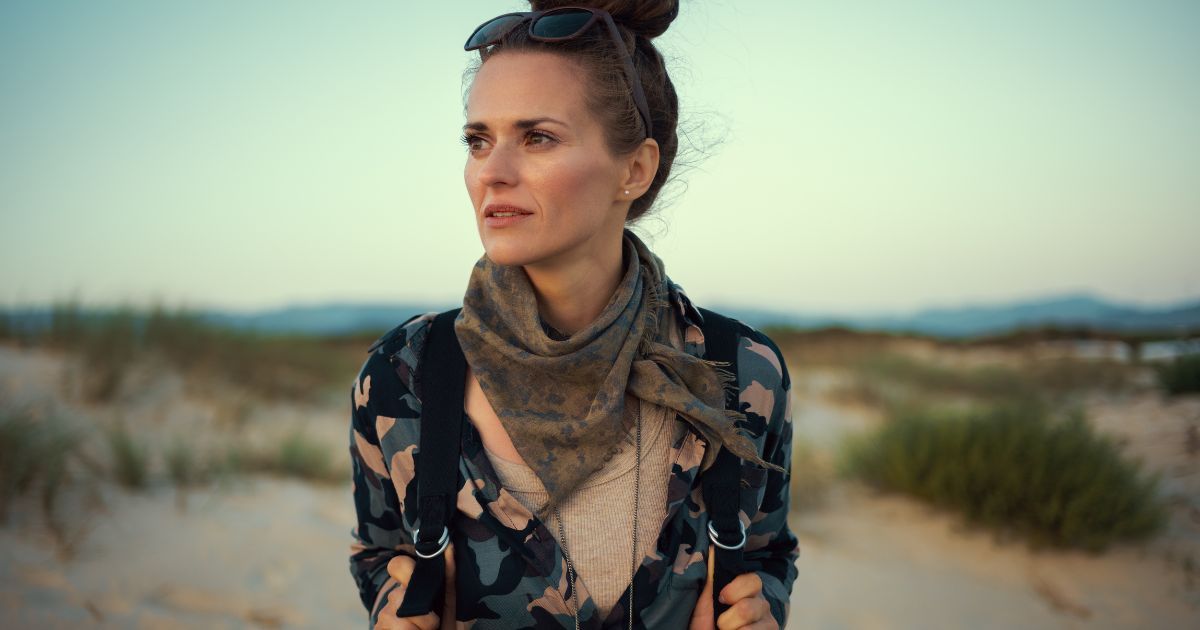
The seasons play a big role in how you should gear up for your camping trip. Each season has its quirks, and your clothing should align with the weather you’ll be encountering.
Summer Camping Trip
1. Sun Protection
The summer sun is glorious but can be harsh. A wide-brimmed hat, sunglasses, and sunblock are your basic arsenal against UV rays. But don't stop there; opt for clothing with UPF (Ultraviolet Protection Factor) ratings to provide that extra shield against the sun’s rays.
2. Staying Cool (T-Shirt, Cargo Pants)
In the summer, less is more. A breathable, moisture-wicking T-shirt will keep you fresh, while a pair of comfortable cargo pants can offer protection against brushes and bugs while providing much-needed ventilation.
Winter Camping Trip
1. Staying Warm (Thick Socks, Fleece Jacket)
As the temperatures plummet, layering becomes your best ally. Thick, insulating socks are crucial to keep your toes cozy, and a fleece jacket provides warmth without the bulk.
2. Extra Warmth (Extra Layers)
Never underestimate the warmth generated by additional layers. An extra sweater or a down jacket can be a lifesaver when the cold winds blow.
Fall Camping and Transitional Weather
1. Versatile Layering
Fall is a time of transition, and versatile layering is key. Having the option to add or shed layers easily will keep you comfortable as temperatures fluctuate throughout the day.
2. Rain Gear (Rain Jacket, Rain Pants)
With the fall, comes the rain. A reliable rain jacket and a pair of waterproof pants will keep you dry during those unexpected showers, making sure nothing dampens your camping spirits.
With the right footwear and clothing tailored for the season, you are not just prepared; you are camping smart. Each season has its charm, and with the right gear, you can enjoy what nature offers, come rain, shine, or snow.
Packing Smart: Clothes and Gear
Packing clothes for a camping trip can sometimes feel like preparing for a space expedition.
You want to be ready for anything, but you also don't want to lug around unnecessary weight.
Let's streamline that packing list and ensure you've got the essentials covered.
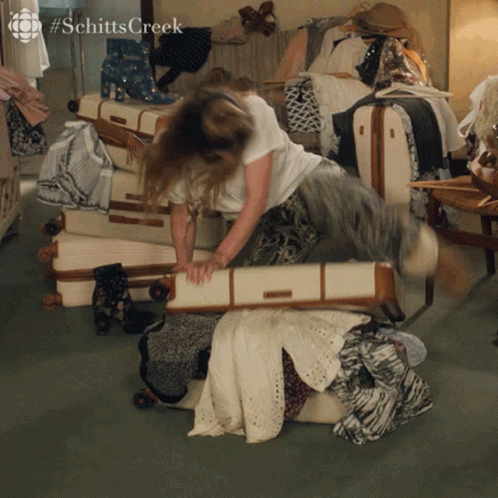
How Much Clothing to Pack
It's tempting to pack a myriad of camping outfits but in the wild, simplicity and functionality triumph.
For example, if you're going for 3 days, Friday to Sunday, I would pack 3 pairs of underwear and socks, one pair of pants, and one shirt.
Remember, camping is a break from the daily grind, and that includes the fashion show!
Packing Separate Outfits
While you want to minimize the clothing you pack, having separate outfits for specific activities is wise.
Have a comfortable outfit for hiking and exploring, a warmer outfit for the chilly evenings, and perhaps a more relaxed outfit for lounging around the campsite.
This way, you're prepared for the different aspects of your camping adventure without overpacking.
Essential Camping Clothes and Gear (Sleeping Bag, Camping Gear)
Investing in key pieces of camping gear is investing in comfort and safety.
- A quality sleeping bag suited to the lowest expected temperature is crucial for a good night’s sleep.
- Other essentials include a sturdy tent, a reliable flashlight or headlamp, and a first-aid kit.
These basics create a framework for a safe and comfortable camping experience.
Practical Arrival Outfit
Your arrival outfit should be a blend of comfort and functionality.
Think of a moisture-wicking T-shirt, a pair of comfortable yet durable pants, and your trusty hiking boots.
This outfit should carry you comfortably from your car to the campsite, and through your first day of adventure.
Special Considerations
Every camping trip is unique and may require some specialized gear or clothing. Being prepared for the specific conditions of your camping destination will ensure a more enjoyable experience.
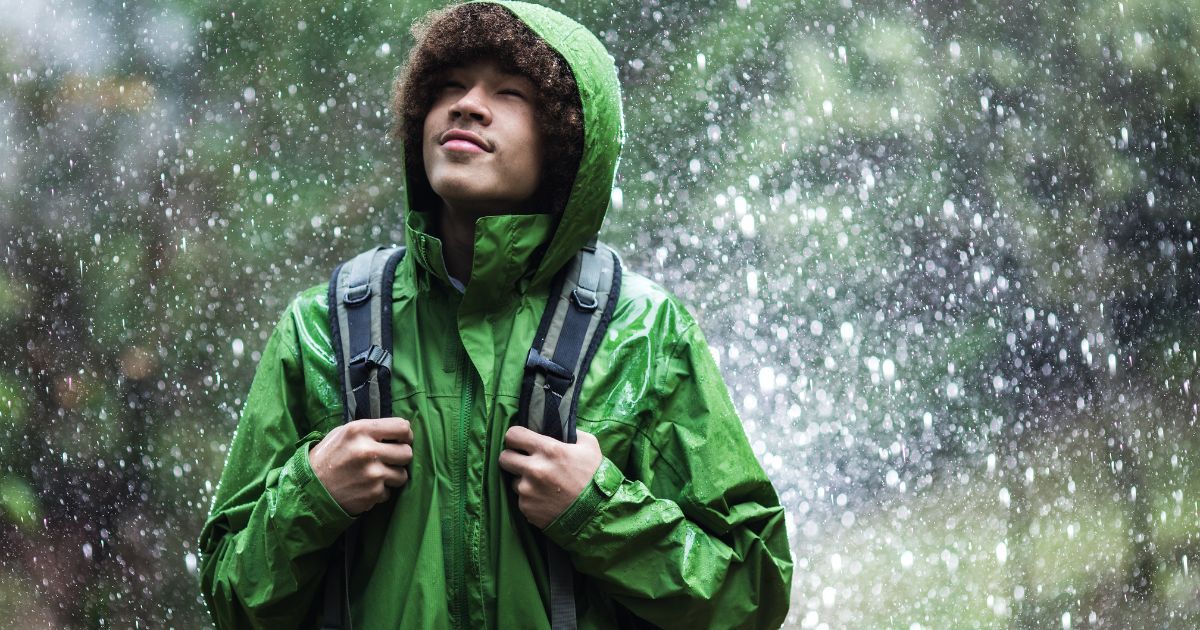
Wet Weather Preparations (Waterproof Jackets)
Expect the unexpected when it comes to weather. Having a waterproof jacket and rain pants ready can be a lifesaver when the skies decide to open up. It's all about staying dry and keeping the adventure going, rain or shine.
Hot Weather Precautions
Hot weather camping demands sun protection and hydration. Along with sunblock, consider packing a hydration reservoir or water bottles to keep hydration in check.
Lightweight and light-colored clothing will reflect, rather than absorb, the sun's rays, keeping you cooler.
Activities-Specific Gear (e.g., Bathing Suit for Swimming)
Your camping trip might include a variety of activities from swimming in a lake, fishing at dawn, or hiking through trails.
Pack accordingly with a bathing suit, a good hat for sun protection while fishing, or a sturdy pair of hiking boots for those scenic trails.
Your gear should enhance your experience, not hinder it.
Packing smart and being prepared for a variety of weather conditions and activities will ensure you're comfortable and ready to fully embrace the great outdoors.
Each camping trip is a new adventure, and with the right gear, you're well on your way to creating lasting memories amidst nature's splendor.
Practical Tips for Your Next Camping Trip
Preparation is the stepping stone to a successful camping trip. Being well-prepared not only ensures a comfortable outdoor experience but also safeguards you against unforeseen challenges.
Here are some practical tips to consider before heading out on your next camping venture.

Checking the Weather Forecast
An accurate weather forecast is your crystal ball into the days ahead. It helps you pack clothes appropriately for the expected weather conditions.
However, always prepare for the unexpected.
A sudden drop in temperature or an unforeseen rainstorm should find you well-prepared and not scampering for shelter.
Planning for Outdoor Activities (Outdoor Adventure)
Every camping trip is adorned with a myriad of outdoor activities.
From hiking, fishing, to exploring the nearby trails, planning your attire for these adventures is crucial. For instance, if a hike is on the agenda, ensure you have sturdy, comfortable hiking boots and moisture-wicking clothing.
If a serene lake nearby is beckoning, having a bathing suit packed is wise.
Car Camping Clothes Vs. Backpacking Attire
The type of camping you choose also dictates your clothing choices.
- Car camping affords the luxury of packing extra outfits and gear without the worry of carrying them on your back.
- Backpacking demands a minimalist approach, where every item packed must justify its weight and space.
It's about striking a balance between essentials and luxuries, making wise choices to ensure comfort and enjoyment without overburdening yourself.
What Not to Wear When Camping
Camping is all about embracing the outdoors while staying safe and comfortable. Here's a quick list of what not to wear to ensure a pleasant camping experience:
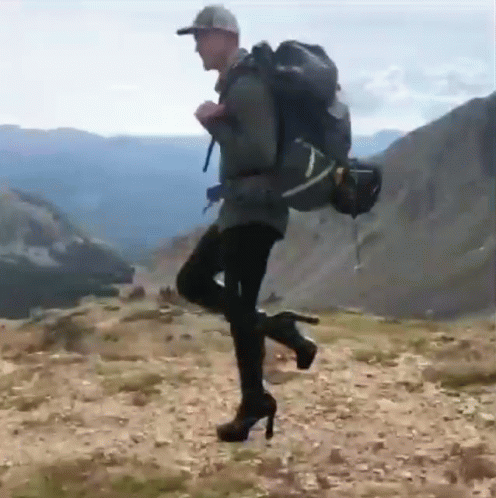
- Fancy or White Clothing: Fancy clothes are not practical for the outdoors, and white clothing can easily get stained.
- Denim or Heavy Cotton: These materials take a long time to dry and can become uncomfortable in rainy or humid conditions. Cotton tends to absorb water and can leave you feeling cold and wet. Denim can be restrictive and doesn't allow freedom of movement.
- New Shoes: New shoes can cause blisters. And let's face it your shoes are gonna get pretty dirty. So, stick to well-broken-in footwear to keep your feet happy.
- Flip Flops: While they might seem comfortable, flip flops offer no protection against rocks, thorns, or rough terrain. But they are good to bring along if you're using showers at a campground, for swimming, or just around camp. I wouldn't rely on them for the entire trip.
- Jewelry or Valuables: Rings, necklaces, and watches, these items can easily get lost, damaged, or even cause injury when doing outdoor activities. It's easy to lose small items in the great outdoors, better to leave them safely at home.
By avoiding these items, you'll be on track for a comfortable and hassle-free camping adventure.
Frequently Asked Questions
How do you look good when camping?
Looking good while camping is all about choosing clean, comfortable, and well-fitted clothing that makes you feel confident. Pants that fit properly and are not overly baggy is key. Opt for easy-to-layer pieces like T-shirts, flannels, and jackets, and wear a hat or bandana to keep your hair neat, don't forget to smile and enjoy the outdoor vibes!
What do you wear at night when camping?
When camping at night, staying warm and comfy is key. Wear loose, soft clothes like flannel pajamas or a long-sleeve shirt and pants. If it's cold, wear warm socks and a beanie. Remember, the right sleepwear helps you sleep better for more fun the next day!
What not to pack when camping?
When camping, pack light and smart. Avoid bringing valuables or items like jewelry that are hard to replace. It's also best to skip on heavy gadgets and electronics as they can weigh you down. Lastly, leave behind any fancy clothing or shoes; camping is all about being comfy and close to nature!
Final Thoughts
Camping is a doorway to nature's heart, a break from the mundane, and a chance to reconnect with the wild. Dressing appropriately, packing smartly, and preparing for the expected and unexpected are the keystones to memorable camping trips.
We've navigated through the essentials of what to wear camping, the significance of layering, choosing the right materials, the importance of sturdy footwear, and how to pack efficiently for different weather conditions and activities.
Your camping adventure awaits, and being well-prepared is your ticket to a comfortable and enjoyable outdoor experience.
Whether you're a seasoned camper or a novice, gearing up appropriately will ensure you are ready to embrace whatever nature throws your way.
Before You Go...
